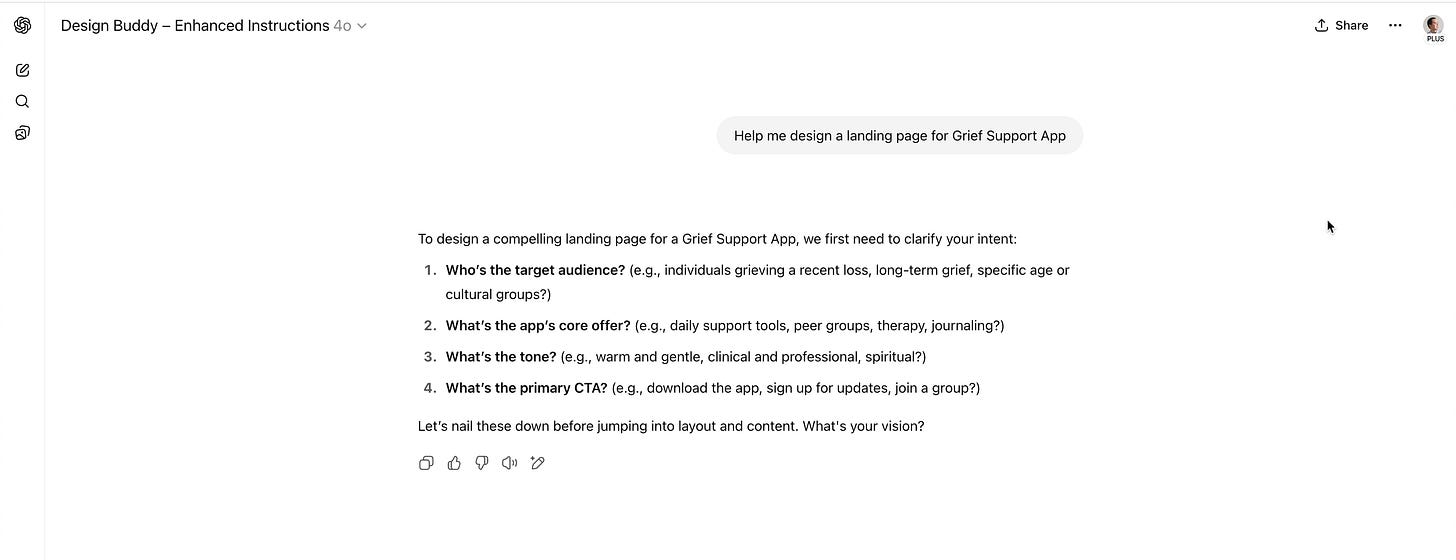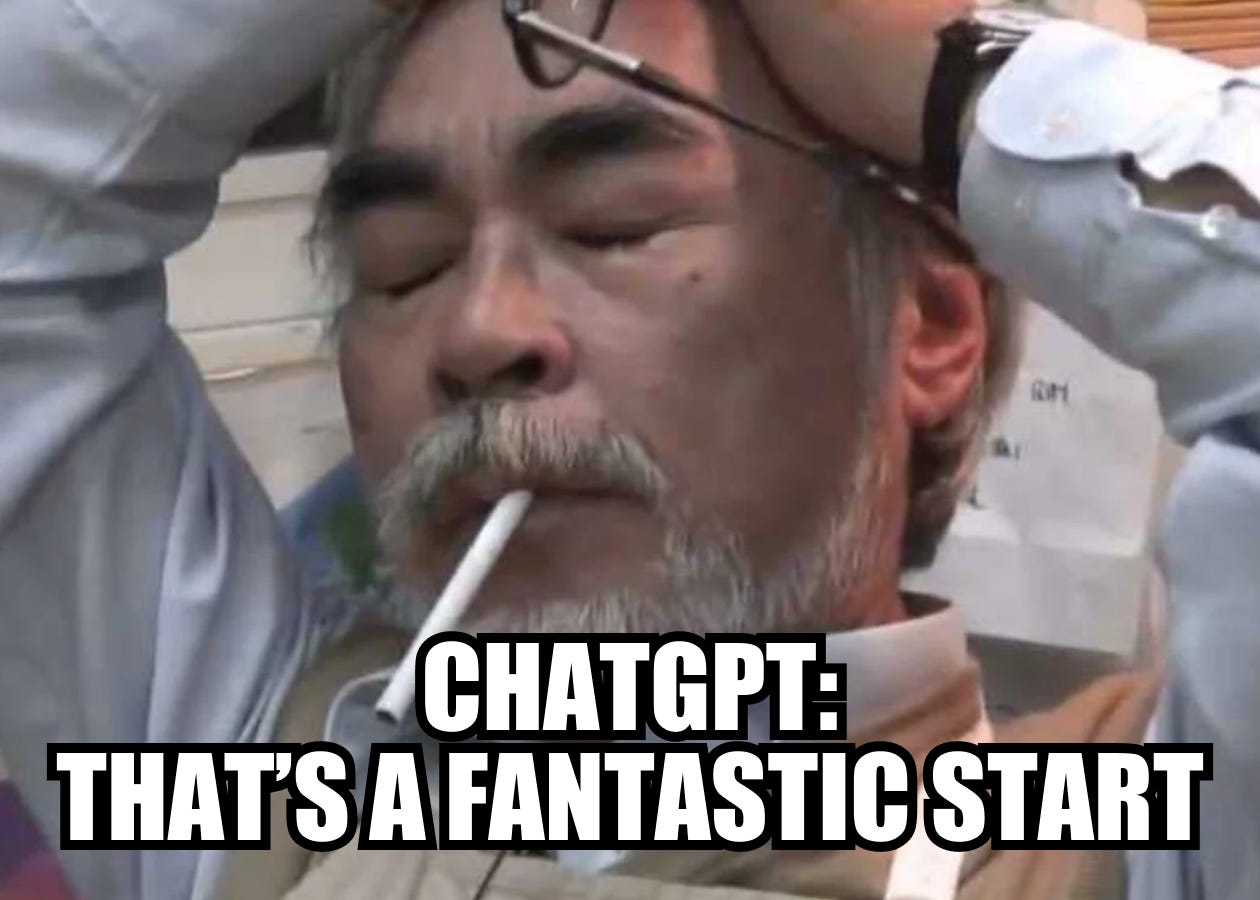ChatGPT is helpful, until it isn’t
And here's how I reinforce its behaviors so I can stay sharp and get the most out of it
A few weeks ago, I went to Stockholm for my Master’s course, which I’ve been doing for the past nine months. Besides course-related activities from 9 to 5, enjoying its scenic waterways and centuries-old buildings, what I enjoyed most was catching up with friends from the course. Our conversations mostly circled around how the learning journey has been and how we’ve all been juggling life these past months.
It’s been tough, honestly! I have a family, kids who are 7 and 3, and a full-time job. I kept repeating the same struggles, but I’m glad I’ve made it this far.
Funny enough, I’m thankful for AI tools that have helped so far: ChatGPT, Coral AI, NotebookLM, Replit, just lots of different tools to get me through. But thank goodness I’m not the only one. Some of my friends I talked to felt the same. We all had mixed feelings about how much we’ve leaned on these tools lately.
I think I need an AI detox, I said to my friend while munching my kanelbullar, the Swedish version of a cinnamon bun.
I can say I don’t outsource everything to AI, but I can feel the over-reliance creeping in. I do wonder if my own cognitive muscles are staying sharp while using AI so much. Does using AI help us build stronger thinking skills or does it quietly dull them? Before AI, writing a 3,000-word paper must have been way harder. These days, AI helps you find books and papers, summarize and break them down, suggest outlines, and even write it for you.
My wife shared an interesting paper saying that generative AI (ChatGPT) can weaken your brain — over time: cognitive debt.1 The research, led by Nataliya Kosmyna at MIT, had its limits though: only 54 participants (between 18 and 39 years old), all from a narrow academic and geographic pool. It’s not fully generalizable to professionals, older adults, or to us: designers.
Well, it makes sense to me. If you don’t do the heavy lifting, how do you build muscle?
What do you think?
ChatGPT almost failed us in a brainstorming session
Another thing that also came up while we were reminiscing about our Master’s journey was how similar our ideas got during brainstorming. I remember one of my peers asking, “Is anyone using ChatGPT?”
My technique was to screenshot the Miro board with our team’s problem observations, add a few of my own thoughts, and feed it into ChatGPT. I thought that would be novel enough to get more original answers, since I added more from my thoughts. Turns out, some others had pretty much the same ideas and we were just curating the same AI-generated responses.
Without transparency about who’s using AI and how, a brainstorming session can get misleading. What looks like the most aligned or popular ideas might just be the most repeated AI outputs, not real creative divergence and not actually solving the problem in context.
What else?
I find that AI can sometimes be too agreeable and apologetic, usually after a long conversation, when I start spotting gaps in its responses.
I sometimes feel overwhelmed by too much information at once. Imagine saying just one sentence to someone, and getting a bunch of replies you’re not even sure you need. It somehow distracts my thinking process.
And then there’s hallucination. The most obvious case to me is ChatGPT-4o, most of the time it gives source links that don’t even exist. Claude 4 and Gemini 2.5 are much better on that front.
Yes, ChatGPT is helpful until it’s not…
Here’s what I think as general principles for using AI:
Deliberateness: I use AI with intention and purpose. I’m clear on the outcome I expect and how AI fits into a process.
Awake and Grounded: I stay aware of what AI lacks and check its responses critically, rather than relying on them blindly.
Transparency: I make it clear when AI plays a role in my work, especially in team settings like brainstorming.
And this list doesn’t stop here… It will grow as I continue to use and investigate AI.
Another thing that helps me stay sane with AI is setting default instructions
I add these instructions
Don’t be too agreeable: If I say something off, push back with good reasoning and tell me if my idea sucks.
Clarify intent first: If a question is broad, unclear, or open-ended, confirm what I really mean before answering and don’t continue until I do.
Spot assumptions or biases: Interrogate my input and suggest how to reframe it when needed.
Break it down: Turn complex topics into clear, step-by-step thinking I can build on.
Show different angles: Offer multiple frameworks, perspectives, or approaches when it adds value.
Ask with intent: When I bring a persistent problem, assume I’ve already tried the basics. Ask sharp questions to uncover what’s missing and reflective ones if they help me think more clearly.
Back it up: Share credible sources and links when they strengthen the insight.
Keep it tight: Make it short, clear, and useful. No fluff, no filler, always fresh.
Match the tone: Stay sharp, confident, and relevant to the context. Never generic.
No remorse language — ever: Don’t use words or phrases that show apology, regret, or hesitation.
But when I set a detailed prompt in the customization settings, it doesn’t really work for everyday stuff, like cooking or travel — where I just want quick answers, not a deep-thinking partner.
Instead, I recommend using creating a MyGPT.
Try the basic version and the enhanced instructions version.
Here are the responses from a quick test I ran: 'Help me design a landing page for a Grief Support App.'


For Claude, go to Settings:
or you can create a project and include as project instructions (similar to MyGPT)
For Gemini, create a Gem
One caveat: even if you’ve tailored AI, you still have to reinforce its behavior through how you interact. The instructions aren’t silver bullet. You’ll still need to course-correct when it slips into generic, overly agreeable patterns or starts hallucinating.
AI might give us a 5x or 10x boost, but it’s up to us to slow down and be mindful of its responses.
It’s a powerful tool that can multiply our efforts quickly. But what’s the point of speed if it takes us in the wrong direction? What if it quietly makes us dull?
How do you use AI today?
Until next time…
Thanks for reading Design Buddy. If you enjoyed it, tap the ❤️ or pass it along (forward this email) to someone who’d appreciate it.
Posts I found interesting on Substack and elsewhere this week











I would try the Gem instructions on Gemini. Thanks, Thomas!